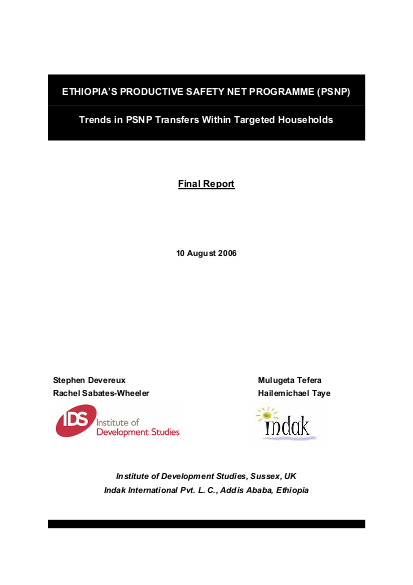
Food insecurity in Ethiopia is normally understood in terms of recurrent food crises and famines, and responses to food insecurity have conventionally been dominated by emergency food-based interventions. In the ten years from 1994 to 2003, an average of five million Ethiopians were declared “at risk” and in need of emergency assistance, and since 1998 the numbers of food aid beneficiaries in Ethiopia have fluctuated between 5 and 14 million every year [see Figure 1]. However, a high proportion of households that receive emergency food aid, or work on public works projects, every year are not “famine prone” but are “chronically food insecure” – they face predictable annual food deficits caused by agricultural production constraints and poverty. These “predictably food insecure” people are also exposed to recurrent shocks, usually triggered by drought, that raise their vulnerability further, by forcing them to dispose of their assets to survive. This results in a gradual deterioration of their food security status over time, which decades of large-scale food aid deliveries have done little to prevent. Instead, dependency on food aid has steadily increased over time, as has the number of chronically food insecure Ethiopians.
